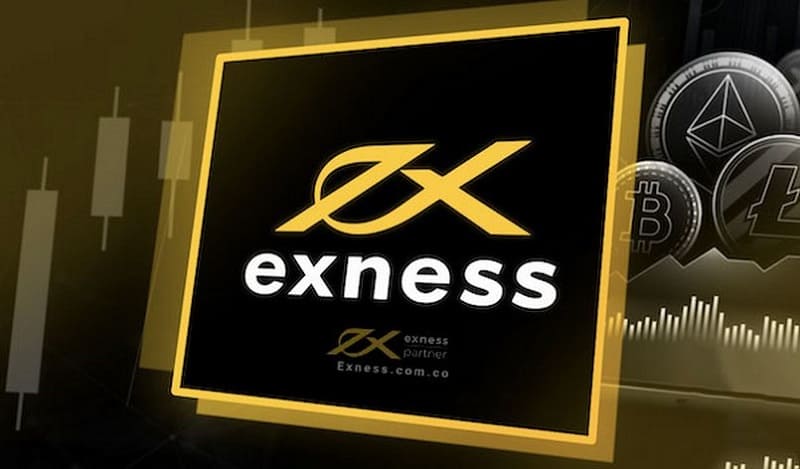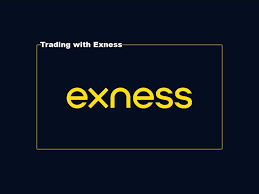
7 minute read
How to Change Leverage on AVATRADE
Leverage is one of the most powerful weapons in a trader’s arsenal. It allows for amplified profits but also intensifies losses. Choosing the right leverage is not a one-time task; it’s a dynamic decision based on market conditions, trading strategies, and risk appetite. For traders using AVATRADE, understanding how to change leverage is a must if you’re serious about taking control of your trading destiny. 🎯
In this in-depth guide, you’ll discover how leverage works on AVATRADE, how to adjust it, what to watch out for, and how to use it wisely across different asset classes. Whether you're trading forex, stocks, commodities, or crypto—this is your all-in-one reference.
🏅 3 Best Forex Brokers
1️⃣ Exness: Open Account Trading | Go to broker
2️⃣ XM: Open Account Trading | Go to broker
3️⃣ JustMarkets: Open Account Trading | Go to broker

🚀 Understanding Leverage on AVATRADE
Leverage allows you to open a position much larger than your actual capital. With AVATRADE, this means you can control a $100,000 trade with just $1,000 in your account if your leverage is 1:100.
But the rules aren’t the same for every trader.
AVATRADE operates under multiple regulators across the globe—like the Central Bank of Ireland, ASIC, FSA, and FSCA—each with their own leverage caps. In most cases:
Retail clients may receive leverage between 1:30 to 1:400, depending on the instrument and regulatory region.
Professional clients (those who meet eligibility criteria) may get higher leverage—up to 1:400 or even 1:500.
Leverage levels also differ across instruments:
Forex majors: Typically up to 1:400
Commodities: Usually 1:100 or lower
Indices: Between 1:50 and 1:200
Cryptocurrencies: Often capped around 1:20 or less
To change your leverage effectively, you need to first understand what category your account and instruments fall into.
🔐 Why Adjusting Leverage Matters
Leverage is often mistaken for a profit multiplier. But in reality, it’s a risk management tool. When you adjust leverage, you directly influence:
🔄 Your margin requirement
💥 Your potential exposure
💸 The size of your possible profits or losses
🚨 Your stop-out or margin call thresholds
Let’s say you’re running a scalping strategy. You might want higher leverage for smaller but frequent trades. On the other hand, for swing trading or long-term positions, lower leverage ensures your trade survives temporary volatility.
Smart traders use leverage strategically, not recklessly.
🛠️ How to Change Leverage on AVATRADE: Step-by-Step Walkthrough
Changing leverage on AVATRADE isn’t done within the MT4 or MT5 platform. Instead, it requires logging into your AVATRADE client portal and adjusting leverage at the account level.
Here’s the full breakdown:
🔑 Step 1: Log in to Your AVATRADE Account
Head to the official AVATRADE client portal using your email and password. Two-factor authentication may be required if enabled.
🧭 Step 2: Access “My Accounts” or Dashboard
Once inside, navigate to the section labeled “Trading Accounts”, “My Accounts”, or a similar name. This is where all live and demo accounts are listed.
🧰 Step 3: Locate the Specific Account
Click on the MT4 or MT5 account you wish to change leverage for. You’ll see your account number, current leverage, balance, and server.
📝 Step 4: Choose “Change Leverage” Option
Click the gear icon or a dedicated button that says “Change Leverage.” This will open a list of leverage options available for your account type and region.
⚖️ Step 5: Select Your New Leverage Ratio
Options typically include:
1:10
1:20
1:50
1:100
1:200
1:400
Choose based on your strategy, market conditions, and regulatory limits.

🧾 Step 6: Accept the Risk Disclosure
AVATRADE will ask you to accept a risk warning notice. Confirm that you understand the risks of trading with higher leverage.
📤 Step 7: Submit and Wait for Approval
Changes are often applied within a few minutes. You may receive a confirmation via email or see the updated leverage reflected in your dashboard.
⚠️ Important: If you have open trades, the leverage change might not apply until they are closed. Always check with customer support before adjusting leverage during active positions.
🧠 When Should You Adjust Leverage?
Leverage is not a set-and-forget metric. Depending on market conditions, strategy evolution, or portfolio changes, you might need to review and adjust leverage regularly.
📈 Scenario 1: Increasing Account Size
As your account grows, reduce leverage. More capital gives you flexibility to lower risk while maintaining the same position size.
🧪 Scenario 2: Testing New Strategies
If you’re experimenting with a new strategy—whether algo-based, discretionary, or hedged—reduce leverage to limit downside until it’s validated.
⚠️ Scenario 3: Volatile Markets
During geopolitical events, central bank decisions, or economic uncertainty, lower leverage is safer. It gives more breathing room to trades.
💼 Scenario 4: Regulatory Changes
If you move to a different region or AVATRADE updates their leverage structure, revisit your account settings. Don’t rely on legacy setups.
💡 Advanced Tips for Managing Leverage on AVATRADE
Here’s how top traders manage leverage efficiently on the AVATRADE platform:
🎯 Match Leverage to Trade Type
Scalping: High leverage for smaller quick trades
Swing trading: Medium leverage with wider stops
Investing: Low leverage with strong capital backing
🔐 Always Use a Stop-Loss
High leverage without a stop-loss is gambling, not trading. Lock in your max loss per trade.
💹 Mind Your Margin Level
Keep your margin level above 150% at all times. A drop below 100% can lead to a stop-out.
🛑 Avoid Overleveraging Multiple Positions
Opening multiple trades using maximum leverage is a fast track to liquidation. Use position sizing calculators to stay safe.
📊 Review Weekly
Traders who survive long-term review leverage weekly and make adjustments based on both market behavior and performance.
🧾 Example: How Leverage Impacts Margin on AVATRADE
Let’s say you deposit $1,000 and want to open a 1-lot position in EUR/USD.
At 1:100 leverage, required margin ≈ $1,000
At 1:400 leverage, required margin ≈ $250
At 1:20 leverage, required margin ≈ $5,000 (insufficient)
You can see that leverage determines whether you can open a position or not. But don’t be fooled—less margin used means more risk if price moves against you. 📉
🛡️ Risk Management: The Real Power Behind Leverage
Leverage only becomes useful when paired with solid risk management. Here’s what every serious AVATRADE user should do:
Define your risk per trade (1% or less of total capital is a common rule)
Use risk-reward ratios like 1:2 or 1:3
Don’t exceed total exposure beyond your emotional and financial capacity
Traders who understand how to adjust leverage tend to last longer and profit more in the long run.
❓ Frequently Asked Questions
Q: Can I change leverage anytime on AVATRADE?Yes, but the change may not apply to trades that are already open. Best practice is to make changes when no trades are active.
Q: Does leverage affect commissions or spreads?No. Leverage only impacts margin requirement and trade exposure. It does not change spreads or commission fees.
Q: What is the default leverage on AVATRADE?Defaults vary. Most accounts start at 1:100 or 1:200. This depends on your jurisdiction and the assets you plan to trade.
Q: Can demo accounts have custom leverage?Yes. You can simulate various leverage settings on demo accounts to test different risk models before going live.
Q: Can leverage be customized for each trade?No. Leverage is set at the account level, not per trade. You’ll need separate accounts if you want to use different leverage setups.

Read more:
🔚 Final Thoughts: Use Leverage With Mastery, Not Emotion
Changing leverage on AVATRADE isn’t just a technical adjustment—it’s a strategic decision. Done right, it protects your capital, enhances your returns, and builds your discipline as a trader.
The key isn’t high leverage. The key is appropriate leverage.
Always align your leverage with:
🎯 Your strategy
💼 Your capital
📊 Your market outlook
⚖️ Your regulatory limitations
Trading is a game of probability and survival. Control what you can—leverage is one of those levers. Pull it wisely, and you'll gain a massive edge over 90% of retail traders who treat it recklessly.










